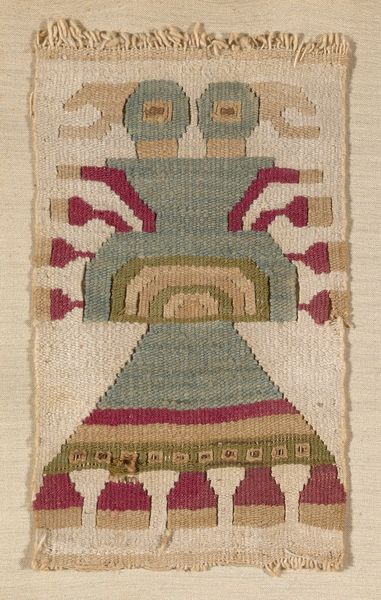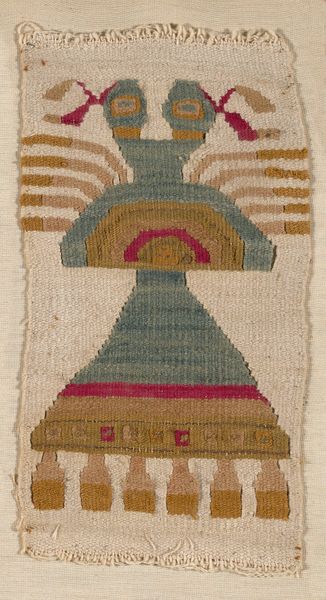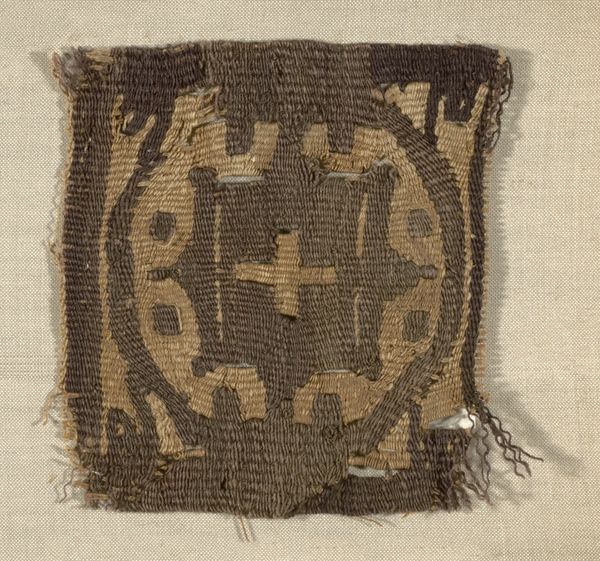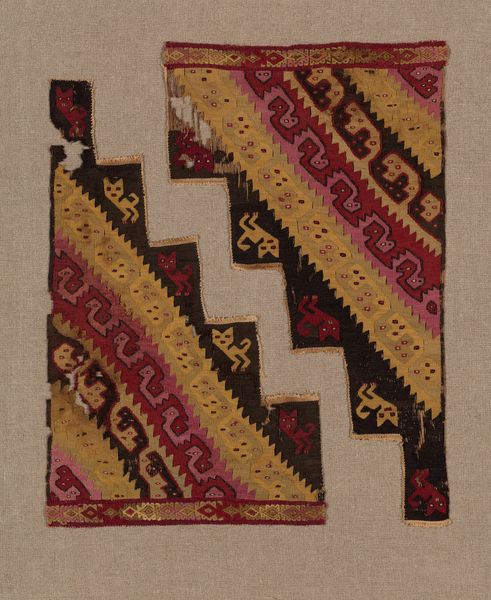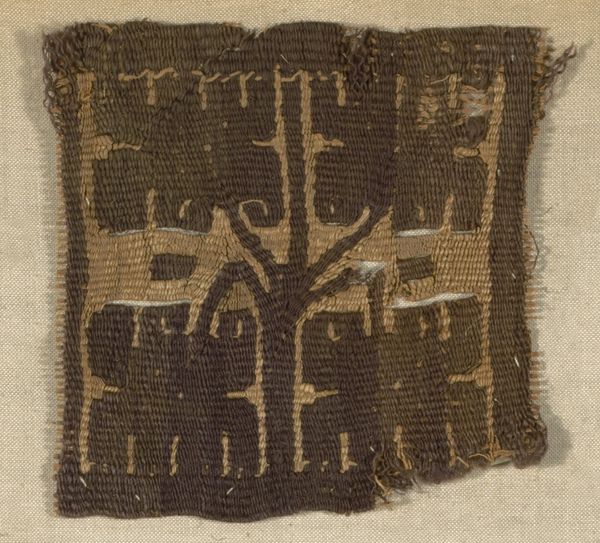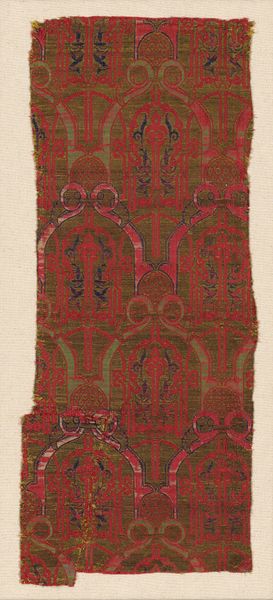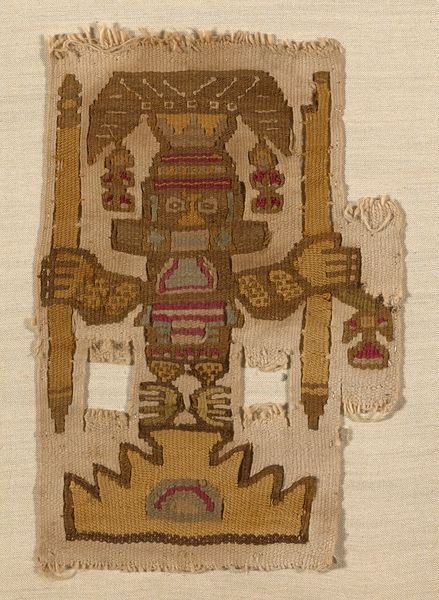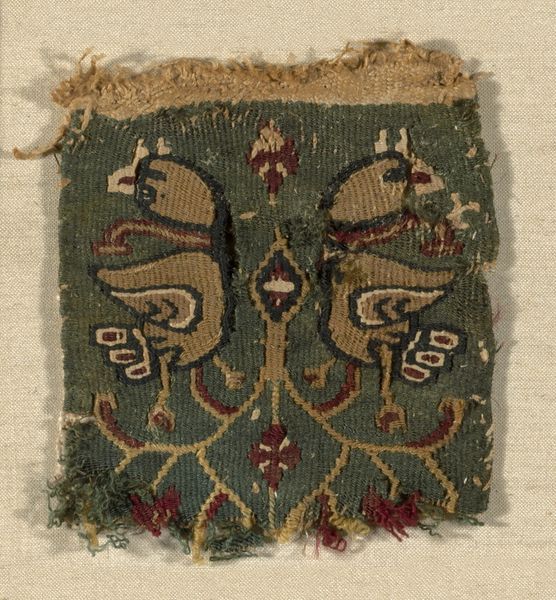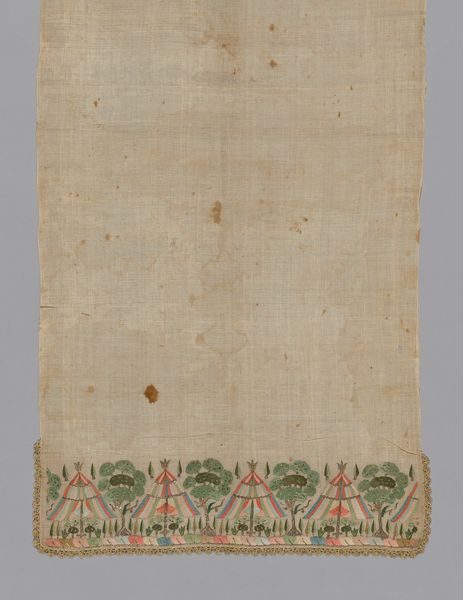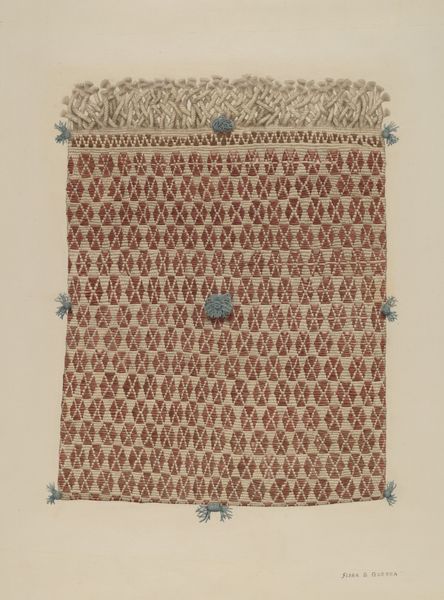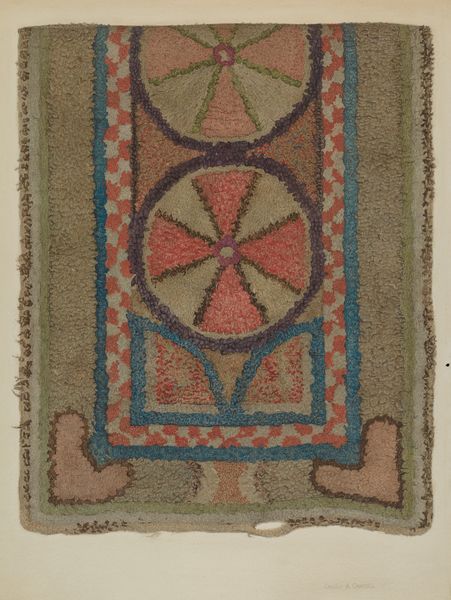
fibre-art, weaving, textile
#
fibre-art
#
weaving
#
textile
#
figuration
#
geometric
#
indigenous-americas
Dimensions: 19.1 × 11.4 cm (7 1/2 × 4 1/2 in.)
Copyright: Public Domain
Editor: Here we have “Patch,” a textile work, possibly dating from 1000 to 1476, made by the Lambayeque people. It's currently at the Art Institute of Chicago. I'm struck by the geometric designs and the muted earthy tones; it feels both ancient and strangely modern. What do you see in this piece? Curator: It's important to view this textile not just as an aesthetic object, but as a powerful artifact embedded in a complex socio-political landscape. The geometric patterns aren't simply decorative. Given the era, we might read them as coded symbols reflecting Indigenous American cosmology or social structures disrupted by colonialism. The muted colors could signify available dyes but also perhaps reflect cultural values around visual expression. Editor: That's fascinating. I hadn't considered the dyes and their cultural implications. What about the figurative element at the top - those two forms at the top? Is it possible to know what that represents? Curator: Figuration in textiles of this era is rarely straightforward. The double-headed figure could be a deity, an ancestor, or a representation of duality significant in Andean thought. Considering colonial impact, these images might represent resistance to cultural erasure, quiet assertions of identity within imposed systems. Editor: So, you’re saying it’s impossible to separate the artistic intent from the socio-political conditions? Curator: Precisely. The beauty and skill displayed here, are undeniably art, but their full power emerges when we understand the contexts of power, resistance, and cultural survival. It moves the conversation away from pure aesthetics and prompts us to question whose voices are amplified in art history and why. Editor: That makes me appreciate the piece on a whole new level. I came looking for art, and I'm leaving thinking about history, resistance, and identity. Thanks. Curator: And hopefully, understanding our world through an indigenous American lens too.
Comments
No comments
Be the first to comment and join the conversation on the ultimate creative platform.
